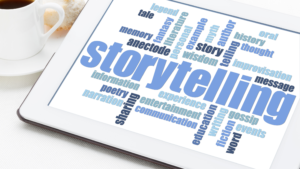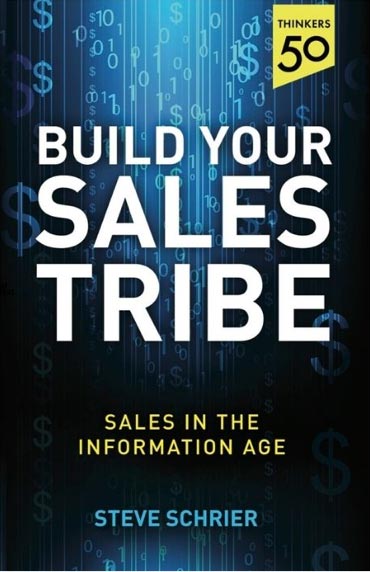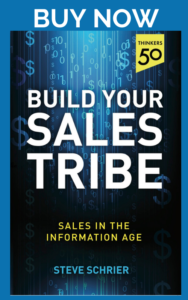
This post is a companion post to the Build Your Sales Tribe Book section on Storytelling. If you own the book, thanks for visiting. If you don’t own the book, find out more here: www.salestribe.co.uk
Make me care
For thousands of years information and knowledge has been relayed between people using stories. People use stories as an authoritative way of receiving and sharing information. Jokes and anecdotes are stories. Most religious texts are a selection of stories and most teachers use stories as a good way to engage with their pupils. Stories carry and trigger emotion which is a powerful motivator in all that we do.
Storytelling for sales people
Good sales people are good storytellers. They should have the ability to put across things that are personal to them, in a business context with colour and avoid dry detail.
You’ll find most presentations which include good stories will go down much better, and be significantly more memorable.
If they can be informative and funny, even better.
Questions that begin with a story to frame them for context will often receive a much more relevant response.
Case studies are a powerful part of the sales arsenal in the Information Age. These are stories.
A proposal to do business is an opportunity to tell a story. The story of how the sales person and buyer’s organisation came together. Starting with conversations that were had, the questions they asked. The needs and professional ‘pain’ they uncovered and how the resultant solution was presented.
Questions that begin with a story to frame them for context will often receive a much more relevant response. Since questioning and listening is one of the most important parts of selling today, anything that stimulates the conversation is good. Get the customers talking.
Where’s the data?
But a story alone is only part of the picture. Combining stories with data is often the best way to put it across. Introducing statistics through storytelling can help establish credibility, providing they are believable and have been worked through.
Case studies where you have made a difference are a powerful part of the sales arsenal in the Information Age. These are stories.
Consider this highly simplified version:
Our product features X,Y,Z which will generate a 20% traffic uplift on our customers websites. Come and talk to us about it.
Or
This our customer Samantha. She is runs a similar business P&L to you. She has a team of 10 around her performing Z,Y,X functions. She has seen a 20% uplift in traffic by implementing our product along with these other tools. This is how she did it… And this is how we helped her and her team. We started by helping her analyse the market. Can we have a conversation to understand how we might help you?
Ready to propose?
A proposal to do business is an opportunity to tell a story. The story of how the sales person and buyer’s organisation came together. Starting with conversations that were had, the questions they asked. The needs and professional ‘pain’ they uncovered, the state of the market and how they might navigate it, how a relationship would change the customers position, and how the resultant solution is presented.
All too often these are very ‘dry’ areas of sales (and marketing) – storytelling makes it much richer.
How to incorporate stories into your selling process:
Some people are born with a natural ability to tell a story, but it is also something that can be learned. Although a lot of it has to do with attention to the detail of the story; getting it right and containing the relevant amount of facts.
- Have some fun with jokes. Get your people to regularly tell you their best joke. I am not joking! Introduce a ‘joke of the week’ contest in your organisation with a prize for the best one? It makes people think about stories – but also have a good joke!
- Every market has a data about what is happening in it – social media, news feeds, company financial reports, press releases, seminars, trade press… But most modern organisations should also have data they continually collect from listening to their customers.
- Use the date to build data driven relevant case studies. Make you and them shine through and involve them in the process. Buyers generally do not want to feel they are alone in a buying decision – they generally don’t like being the first customer with a new supplier to the market. But they do like to feel unique and experts of their own business. So, use case studies to give them comfort they are not alone. Even if this a new implementation or area.
- Create an environment where your organisation develops some anecdotes around your industry. These shouldn’t be too ‘edgy’ or personal. But, where possible, they shouldn’t be broadcast to everyone – hold them back for the relevant interactions. They should be used by your organisation to demonstrate expertise and help buyers navigate the complex market. To develop your organisation’s position as the expert working with the buyer. They shouldn’t be all about your company or you. Most often they can be stories about general success, failure, or even personal stories that demonstrate something comparable. Or they can be an opinion on why something is a mistake.
- Publish your stories through different types of media, not just PDF documents or presentations. Video is very powerful here… as is audio. For instance, a clearly communicated video or audio interview with another customer, or expert in your team is much better than a document that no-one will read. Moreover, it is a perfect tool for your sales people to use.
- Talk at the level of your audience. If you are talking to a tier 1 prospective customer, tell stories about other tier 1s. Consider the outlook of your customer, their competition and what their focus is – don’t be afraid to ask questions about what that is. This changes as you talk to different people in the target organisation.
- In your regular meetings – along with best question that has been asked that week, get your people to tell their best story and why it worked. Perhaps award the best a ‘Chief Story Teller’ award for the week. Celebrate the fact that it makes a real difference.
- Use storytelling to build compelling proposals. Meaningless proposals with reams of documentation are a thing of the past. Documents where the receivers skips to the back to the commercial terms are not a good use of time. Therefore, it is important to use the opportunity to create a thing of value. It doesn’t mean it can’t include technical detail.
- Presentations and demonstrations that the company makes should be story based. The sales process should be treated as creation of a story: As a salesperson goes through a process, asking questions and listening to the answers, they should make notes and share them with the customer.
- It’s a culture that needs adoption over time. But it can be learned.
Be brief!
Above all make any story punchy, interesting and most importantly to the point. Some of the best jokes are simple one liners. Some of the best business stories are literally some interpretation of some stats into something meaningful and relevant to a situation.
Who should do it?
Storytelling topics and selection of content should sit firmly within the salesperson’s area of responsibility. They will usually know what is the most relevant thing a customer is looking for and creating feedback loops (as above) is essential to collect up-to-date motives.
But, actually researching, creating and ‘polishing’ materials should not be the responsibility of your sales people, it is a distraction you don’t want. You want sales people communicating with prospective customers.
Here is a TED talk by Andrew Stanton, the Director, screenwriter, producer and voice actor who demonstrates the power of good storytelling
Case studies establish credibility, drive confidence and referrals.
- Use storytelling to build compelling proposals. As we mention in the Build Your Sales Tribe book, meaningless proposals with reams of documentation are a thing of the past. Documents where the receivers skips to the back to the pricing are a waste of time for everyone involved. Therefore it is important to use the opportunity to create a thing of value.
- Presentations and demonstrations that the company makes should be story based. Meanwhile, dry, features and benefits based presentations are so last century!
- The sales process should be treated as creation of a story. As a salesperson goes through a process, they should make notes and share them with the customer. This demonstrates why the supplier and the customer are spending time together and helps add value to the process. This should then be use with all the relevant people on the buyer’s side. Eventually this is part of ‘finding all the people who can say no’ which is a very important part of modern selling.
- Above all make any story punchy, more interesting and most importantly to the point. These stories should focus on value creation and clearly connected with establishing the supplier as an expert in the field, topic or industry. Backed up by positive testimonials wherever possible.
- Be brief! Some of the best jokes are simple one liners. Some of the best business stories are literally some interpretation of some stats into something meaningful and relevant to a situation. So don’t think they have to be the re-writing of ‘War and Peace’ By Leo Tolstoy – or you risk no-one reading it!
Books on building stories:









